Question A:
The US economy would be substantially stronger today if the state and local ‘stay-at-home’ orders had been more uniform and lasted longer in the first half of the year.
Responses
© 2025. Kent A. Clark Center for Global Markets.
7%
0%
0%
7%
40%
42%
5%
Responses weighted by each expert's confidence
© 2025. Kent A. Clark Center for Global Markets.
0%
9%
39%
46%
6%
Question B:
The economy will receive a substantial boost as soon as K-12 schools can be safely opened in person nationwide.
Responses
© 2025. Kent A. Clark Center for Global Markets.
7%
0%
0%
0%
12%
63%
19%
Responses weighted by each expert's confidence
© 2025. Kent A. Clark Center for Global Markets.
0%
0%
11%
63%
26%
Question A Participant Responses
Participant |
University |
Vote |
Confidence |
Bio/Vote History |
|---|---|---|---|---|
 Daron Acemoglu |
MIT | Bio/Vote History | ||
|
With better lockdown policies, there would have been tens of thousands of fewer deaths, but probably not much better GDP outcomes.
|
||||
 Joseph Altonji |
Yale | Bio/Vote History | ||
|
|
||||
 Alan Auerbach |
Berkeley | Bio/Vote History | ||
|
|
||||
 David Autor |
MIT | Bio/Vote History | ||
|
Korea is the best case scenario. Germany had its act together. The U.S. response was chaotic, and this has slowed the eventual rebound
|
||||
 Katherine Baicker |
University of Chicago | Bio/Vote History | ||
|
|
||||
 Abhijit Banerjee |
MIT | Bio/Vote History | ||
|
Less people would have died--that is what we know for sure.
|
||||
 Marianne Bertrand |
Chicago | Bio/Vote History | ||
|
more uniform: yes; longer: less clear vs, say, strict mandating of masks and social distancing.
|
||||
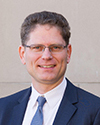 Markus Brunnermeier |
Princeton | Bio/Vote History | ||
|
The intervention should have been earlier, more targeted, and more thoughtful (complemented with more efficient testing and tracing).
|
||||
 Raj Chetty |
Harvard | Bio/Vote History | ||
|
|
||||
 Judith Chevalier |
Yale | Bio/Vote History | ||
|
The economy would be stronger if the stay at home time was used productively to rapidly ramp up testing and other virus responses.
|
||||
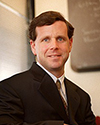 David Cutler |
Harvard | Bio/Vote History | ||
|
|
||||
 Angus Deaton |
Princeton | Bio/Vote History | ||
|
There are many many puzzling features of the dynamics of the pandemic, both here and around the world. So hard to know.
|
||||
 Darrell Duffie |
Stanford | Bio/Vote History | ||
|
Yes, although we have since learned that very extensive use of masks, without a stay-at-home order, would have worked and been less costly.
|
||||
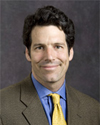 Aaron Edlin |
Berkeley | Bio/Vote History | ||
|
|
||||
 Barry Eichengreen |
Berkeley | Bio/Vote History | ||
|
Widespread availability of testing enabling targeted stay-at-home orders together with contact tracing would have made for stronger economy
|
||||
 Liran Einav |
Stanford | Bio/Vote History | ||
|
|
||||
 Ray Fair |
Yale | Bio/Vote History | ||
|
|
||||
 Amy Finkelstein |
MIT | Bio/Vote History | ||
|
|
||||
 Pinelopi Goldberg |
Yale | Did Not Answer | Bio/Vote History | |
|
|
||||
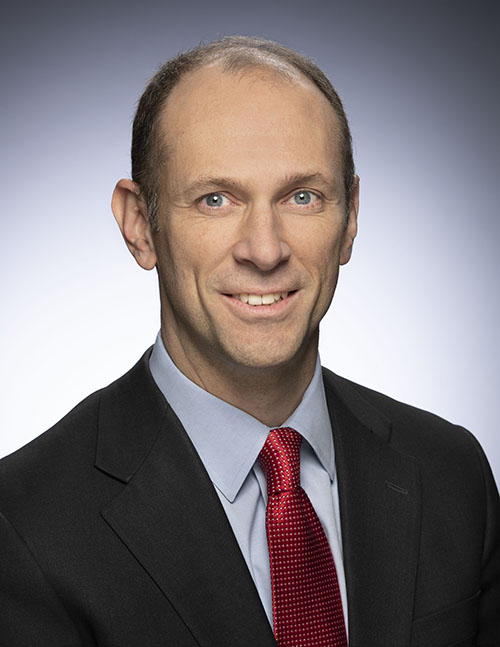 Austan Goolsbee |
Chicago | Bio/Vote History | ||
|
We needed to slow the spread of the virus (still do). Consistency would help as would but it isn't just about shelter-in-place
|
||||
 Michael Greenstone |
University of Chicago | Bio/Vote History | ||
|
Unclear benefits of stay at home without without rigorous tracing, contact tracing, quarantining etc
|
||||
|
Robert Hall |
Stanford | Bio/Vote History | ||
|
Research shows that almost all precautionary behavior would have occurred absent government orders
|
||||
 Oliver Hart |
Harvard | Bio/Vote History | ||
|
|
||||
 Bengt Holmström |
MIT | Bio/Vote History | ||
|
|
||||
 Caroline Hoxby |
Stanford | Did Not Answer | Bio/Vote History | |
|
|
||||
 Hilary Hoynes |
Berkeley | Bio/Vote History | ||
|
|
||||
 Kenneth Judd |
Stanford | Bio/Vote History | ||
|
|
||||
 Steven Kaplan |
Chicago Booth | Bio/Vote History | ||
|
More targeted lockdowns that encouraged more economic activity would have done better.
|
||||
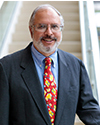 Anil Kashyap |
Chicago Booth | Bio/Vote History | ||
|
Natural caution was very important, hard to know if just stay at home would have been enough to control the virus spread.
-see background information here |
||||
 Pete Klenow |
Stanford | Bio/Vote History | ||
|
Voluntary social distancing has been more uniform than lockdown policies.
-see background information here |
||||
 Jonathan Levin |
Stanford | Bio/Vote History | ||
|
|
||||
 Eric Maskin |
Harvard | Bio/Vote History | ||
|
|
||||
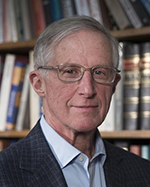 William Nordhaus |
Yale | Bio/Vote History | ||
|
Yes if uno]iform pol
|
||||
 Maurice Obstfeld |
Berkeley | Bio/Vote History | ||
|
|
||||
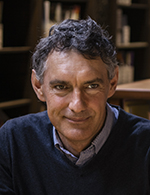 Emmanuel Saez |
Berkeley | Bio/Vote History | ||
|
|
||||
 Larry Samuelson |
Yale | Bio/Vote History | ||
|
There are great returns to mitigating a potentially exponential process early, and doing so uniformly (to avoid weakest-link vulnerabilies.
|
||||
 José Scheinkman |
Columbia University | Did Not Answer | Bio/Vote History | |
|
|
||||
 Richard Schmalensee |
MIT | Bio/Vote History | ||
|
Unknowable. More businesses would have failed early on. Lots would depend on policies after the stay-at-home orders expired.
|
||||
 Carl Shapiro |
Berkeley | Bio/Vote History | ||
|
|
||||
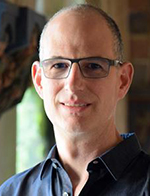 Robert Shimer |
University of Chicago | Bio/Vote History | ||
|
Stronger lockdowns in some European countries have not prevented the need for second lockdowns.
|
||||
 James Stock |
Harvard | Bio/Vote History | ||
|
But only if followed up by masks, testing & quarantine, etc upon reopening; more severe shutdowns alone wouldn't keep the virus suppressed.
-see background information here |
||||
 Richard Thaler |
Chicago Booth | Bio/Vote History | ||
|
Yeah, probably but so many variables at play that it is hard to be sure about anything. Laws are not enforced.
|
||||
 Christopher Udry |
Northwestern | Bio/Vote History | ||
|
I would be very confident if the longer & more uniform closings were accompanied by more testing and better tracing.
|
||||
Question B Participant Responses
Participant |
University |
Vote |
Confidence |
Bio/Vote History |
|---|---|---|---|---|
 Daron Acemoglu |
MIT | Bio/Vote History | ||
|
The key word is SAFELY. That means COVID is under control. If schools open without that, second wave would be much worse and GDP would fall.
|
||||
 Joseph Altonji |
Yale | Bio/Vote History | ||
|
|
||||
 Alan Auerbach |
Berkeley | Bio/Vote History | ||
|
|
||||
 David Autor |
MIT | Bio/Vote History | ||
|
Boost will come *years later* when students reach the labor market with more skills. Status quo is a disaster for human capital formation!
|
||||
 Katherine Baicker |
University of Chicago | Bio/Vote History | ||
|
|
||||
 Abhijit Banerjee |
MIT | Bio/Vote History | ||
|
I don't know why opening of schools would have a large causal effect, but may be it is a signal the economy can coordinate on.
|
||||
 Marianne Bertrand |
Chicago | Bio/Vote History | ||
|
|
||||
 Markus Brunnermeier |
Princeton | Bio/Vote History | ||
|
|
||||
 Raj Chetty |
Harvard | Bio/Vote History | ||
|
|
||||
 Judith Chevalier |
Yale | Bio/Vote History | ||
|
Opening schools likely has a direct effect but also the question implies an environment in which the virus is under more control.
|
||||
 David Cutler |
Harvard | Bio/Vote History | ||
|
|
||||
 Angus Deaton |
Princeton | Bio/Vote History | ||
|
Especially women
|
||||
 Darrell Duffie |
Stanford | Bio/Vote History | ||
|
Parents could then resume more productive work. Also, this likely generates short-run and long-run benefits for children.
|
||||
 Aaron Edlin |
Berkeley | Bio/Vote History | ||
|
Likely to depend on time frame. If schools accelerate the virus spread a short-term boost might be more than offset later
|
||||
 Barry Eichengreen |
Berkeley | Bio/Vote History | ||
|
"as soon as" is different from "because". When schools are safe to open, other activities will also be safe, making for a substantial boost.
|
||||
 Liran Einav |
Stanford | Bio/Vote History | ||
|
|
||||
 Ray Fair |
Yale | Bio/Vote History | ||
|
If causality is pandemic over, economy expands and schools open, it is the pandemic over, not the schools opening, that is the cause.
|
||||
 Amy Finkelstein |
MIT | Bio/Vote History | ||
|
|
||||
 Pinelopi Goldberg |
Yale | Did Not Answer | Bio/Vote History | |
|
|
||||
 Austan Goolsbee |
Chicago | Bio/Vote History | ||
|
You can't go to work if your kid has nowhere to go
|
||||
 Michael Greenstone |
University of Chicago | Bio/Vote History | ||
|
I agree bc the question implies that we have a vaccine or herd immunity
|
||||
|
Robert Hall |
Stanford | Bio/Vote History | ||
|
Ability to have universal K-12 in-person schooling would be a sign of advanced progress in all respects against the virus.
|
||||
 Oliver Hart |
Harvard | Bio/Vote History | ||
|
|
||||
 Bengt Holmström |
MIT | Bio/Vote History | ||
|
|
||||
 Caroline Hoxby |
Stanford | Did Not Answer | Bio/Vote History | |
|
|
||||
 Hilary Hoynes |
Berkeley | Bio/Vote History | ||
|
|
||||
 Kenneth Judd |
Stanford | Bio/Vote History | ||
|
|
||||
 Steven Kaplan |
Chicago Booth | Bio/Vote History | ||
|
|
||||
 Anil Kashyap |
Chicago Booth | Bio/Vote History | ||
|
presumably other activities would also become safe then too
|
||||
 Pete Klenow |
Stanford | Bio/Vote History | ||
|
Partly causal, but more as an indicator.
-see background information here |
||||
 Jonathan Levin |
Stanford | Bio/Vote History | ||
|
|
||||
 Eric Maskin |
Harvard | Bio/Vote History | ||
|
|
||||
 William Nordhaus |
Yale | Bio/Vote History | ||
|
‘Safely’ is big part of plan.
|
||||
 Maurice Obstfeld |
Berkeley | Bio/Vote History | ||
|
|
||||
 Emmanuel Saez |
Berkeley | Bio/Vote History | ||
|
|
||||
 Larry Samuelson |
Yale | Bio/Vote History | ||
|
Education has long-run returns as well as well as great short-run returns in facilitating labor force participation of others.
|
||||
 José Scheinkman |
Columbia University | Did Not Answer | Bio/Vote History | |
|
|
||||
 Richard Schmalensee |
MIT | Bio/Vote History | ||
|
Emphasis on "safely".
|
||||
 Carl Shapiro |
Berkeley | Bio/Vote History | ||
|
|
||||
 Robert Shimer |
University of Chicago | Bio/Vote History | ||
|
|
||||
 James Stock |
Harvard | Bio/Vote History | ||
|
The predicate for safe K-12 reopening is suppression of the virus and a strategy to keep it so; that plus freeing parents' time is key.
|
||||
 Richard Thaler |
Chicago Booth | Bio/Vote History | ||
|
Will certainly help families with small children. Female labor force participation is way down. Same as it ever was.
|
||||
 Christopher Udry |
Northwestern | Bio/Vote History | ||
|
|
||||

